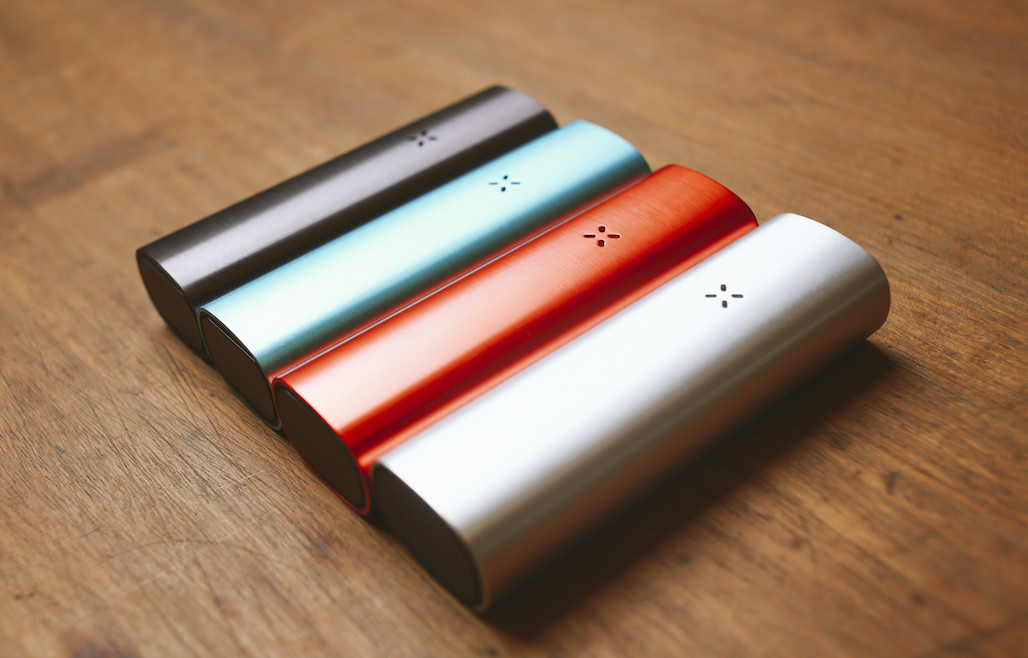How to Design a Portable Vaporizer

The PAX 2
Image: PAX Labs
There are no Oregon-made portable vaporizers. No doubt, our Silicon Forest will someday turns its attention to—wait for it—trees, but until then, Portlanders in search of a vape need look elsewhere.
Our recommendation: The Bay Area, birthplace of the PAX 2, the second evolution of one of the most popular, elegant, and visually striking vaporizers on the market. The mouthpiece doubles as the device's only "button," controlling power and temperature, a single LED light changes color to show battery charge, temperature, and idle status, and an internal motion sensor adjusts power consumption to save battery. It's iPhone engineering brought to bear on a smoking device.
PAX Labs' determination to bring Silicon Valley design to an industry known for skull stickers and hand-blown pipes has paid off. Founded in 2007 by two Stanford product design students, this year, PAX Labs closed a $46.7 million round of funding, expanded to 100 employees, and sold upwards of half a million total units of the PAX 1, before releasing the PAX 2 in March. The company reports it has doubled sales over the past two years.
Take note: While the device is capable of vaporizing any "loose leaf product" the PAX is marketed strictly as a tobacco device, at least until federal law catches up to the state-by-state trend of cannabis legalization.
We asked CEO and co-founder James Monsees what's special about the PAX 2 and the future of the nascent vaporizer market.
How do you go about designing a deceptively simple device like this?
Our first product was the the Ploom Model 1. It was pretty cool. It used these little tobacco capsules, sort of like espresso cartridges and it was butane powered. We went as far putting that product on the market. We realized very quickly the category of e-cigarettes wasn’t really around. Portable vaporization devices were sort of in existence but they were clunky and weren’t terribly popular. So this product was radical. It was an oddball thing. We realized that if you only have a few people in the company, you can have a cool product, but you can’t explain it to people. It’s exceedingly expensive and time-consuming to actually get it out.
The PAX came from that experience. Portable vaporizers were around but they were really designed for, let’s say, extreme users, who were more than happy to push a bunch of buttons and turn a bunch of knobs and fiddle with things to get things where they wanted. We designed PAX as a tool for more mainstream consumers. People who wanted a really simple, elegant experience. Now we have two product lines for which demand is pretty well of the charts. It’s taken some years to get retail saturation here in the US for PAX. We’re not a huge company.
What was your design process?
The thesis that we did [at Stanford], which was the basis for what ultimately became the company, was for a program in product design. The graduate program there is a joint program traditionally between the fine art department and the mechanical engineering department. It’s spawned its own philosophy, what’s now called “design thinking”. If you watch a movie about a writer, trying to come up with something, they’re sitting at a typewriter staring at a blank page. Things just come to them. Or there’s an experience that gives them a push or an insight that starts them putting pen to paper, so to speak. That is not sustainable. You need an approachable process to create new things over and over again. You start by understanding consumer needs. What are the issues, what’s wrong with current product offerings, what’s wrong with their experience? You see someone smoking a cigarette and then wash their shirt, they probably don’t like the smell. That’s an easy nugget to digest. It’s a lengthy process but you take the consumer insights, you set up a fairly standard brainstorming process, and then you repeat that over and over again building and finessing those ideas into prototypes. And with every prototype you repeat the same process. And eventually you start to come up with some cool stuff.
Is the market for the PAX 2 different than for the Ploom Model 1?
The portable vaporizer market was in its infancy before PAX. We proved that this is where the industry is going, this is what consumers going. If you see that happen, from an external perspective, and you try to catch up by making a product that looks similar, or that has similar levels of approachability. That’s great. You will get some consumer attention sitting on a shelf next to our product. But what get gives me confidence in the long-lasting viability of our business is that we have this design process that we repeat. It’s a design engine in the company that never follows or imitates. Every product needs to stand on its own.
Who is using vaporizers?
We only market to existing smokers. There are plenty of smokers in the world. As of right now, our product is only sold in the US and Canada [and now Germany]. That is about to change. The demand is pretty universal. You can call them luxury products, and we do, they’re not things that address need on Maslow’s hierarchy. It doesn’t provide shelter or food. It’s an elected past time. But it’s one that improves the quality of your life.
Has cannabis legalization helped the popularity of the product?
PAX is marketed and sold as a tobacco product. We’re certainly aware and keep a close eye on hat’s happening in cannabis legalization throughout the country. But it’s not our market. That said, we’re aware of the category. It’s an opportunity we may want to address in the future but only when we can do it with complete legal compliance at the federal and local level.




